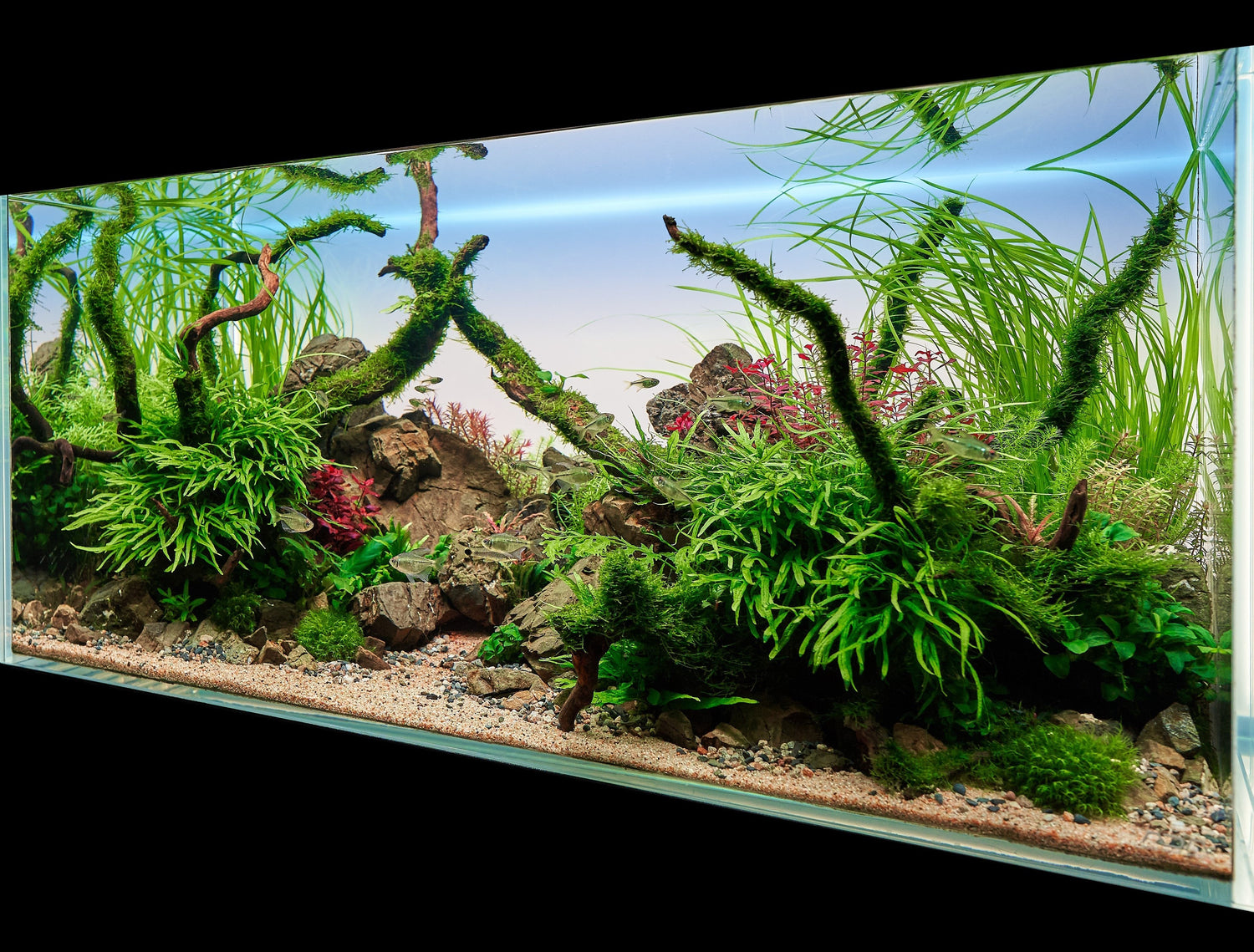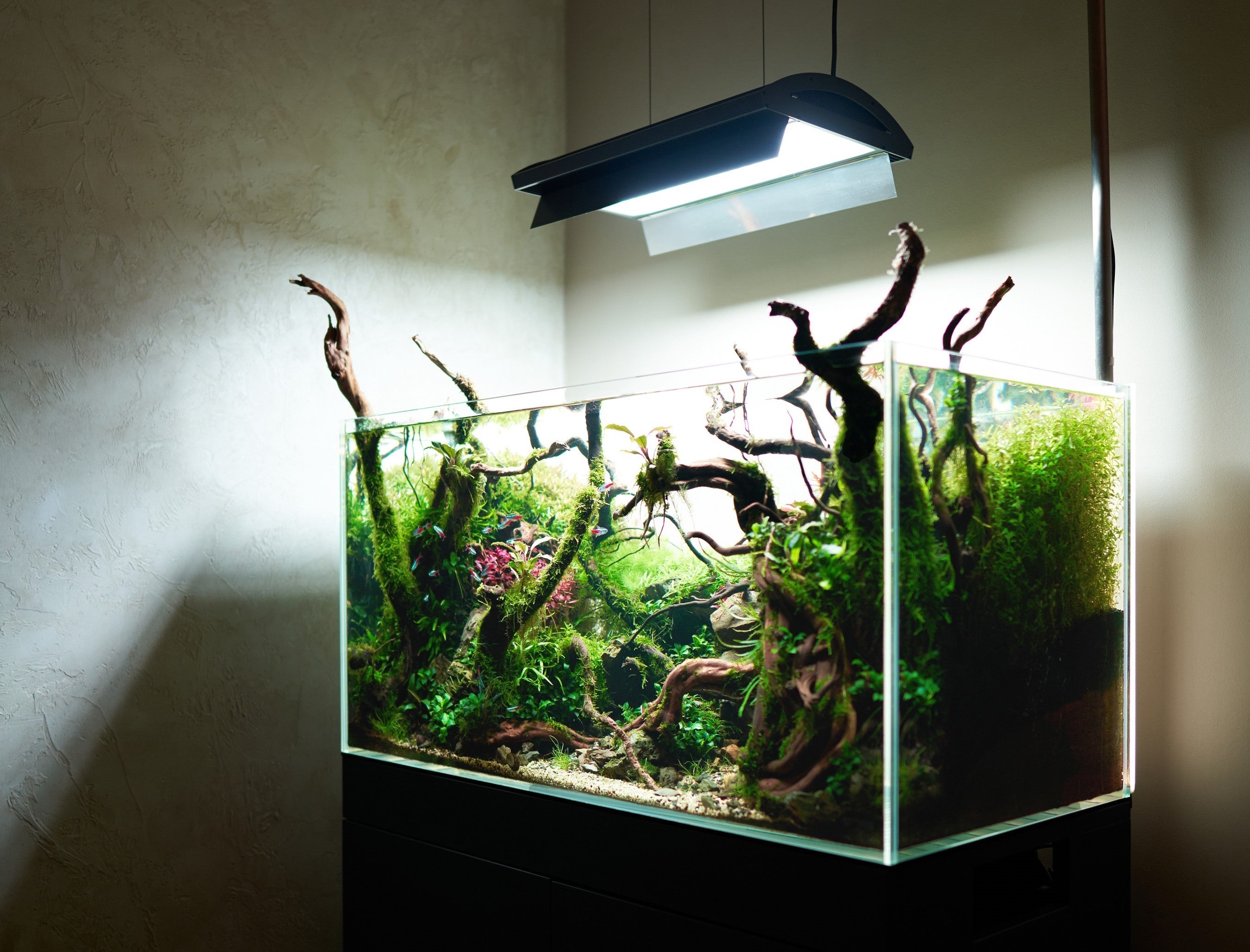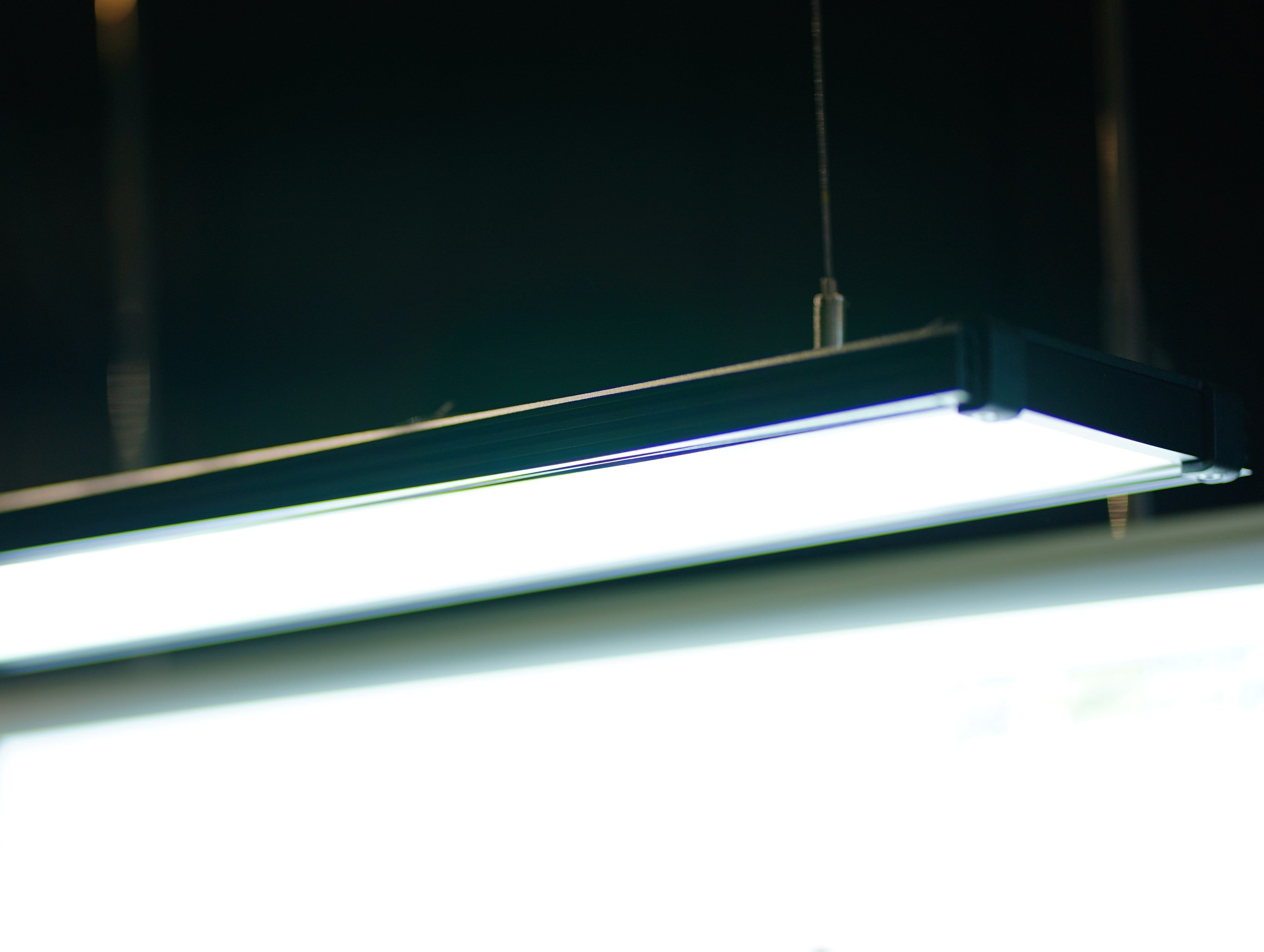Substrate Purpose:
Substrate is added to the base of an aquarium primarily for appearance, a layer of substrate makes an aquarium appear more natural. Secondly, a layer of substrate can act as a medium for plant roots to grow in. Most plant species need a layer of substrate a few inches deep for proper root growth, although some species like Anubias or Microsorum are epiphyte plants meaning they should be placed between rock and wood as their roots grow in the water column. Depending on your type of planted tank your substrate choice will vary greatly. Some substrates are inert meaning they will not influence the water parameters whereas some substrates alter the pH, KH and slowly release nutrients for plants. Personal preference plays a big role in this choice but hopefully this blog post will provide you with some guidance as to what substrate would work best for your planted aquarium.
Substrate Types:
Gravel – Gravel is the most basic form of substrate and is probably the most popular fish tank substrate for beginners. Most gravel is inert, so it will not alter your water parameters in any way, aquarium root tabs can provide nutrients for root feeding plants. Gravel traps debris which can overall make an aquarium dirtier, but this debris can help to feed plant roots. Gravel is not a very popular choice when setting up an aquascape as it does not provide any nutrients for plants. Also, due to the larger grain size of gravel, the scale of an aquascape can look off. Some aquascapers sprinkle a small amount of gravel on top of sand to help add texture and more detail as it works well to break up the boundary between sand and hardscape.
Sand – Sand is a very popular choice due to its small grain size meaning a good sense of scale can easily be achieved in your aquascape. With the addition of root tabs sand can make a good growing medium for most rooted plants. Sand looks natural and comes in a variety of colours such as white, brown and black. Sand is the perfect substrate for bottom dweller species such as Corydoras. Sand does not trap much debris. Debris usually settles on top of sand which can then easily be siphoned off.
Aquarium Soil – Aquasoil is a very popular option and although it is the most expensive option it is the best substrate for growing rooted plants. Most aquasoils alter the pH, KH and provide slow release nutrients for plant roots. Aquasoil does not need to be washed and the dark brown colour looks natural which is another big positive. There are various brands available, research which brand will best suit your needs. Aqua soil is a soft substrate which cannot be reused as it breaks down over time, keep this in mind when aquascaping your planted tank as moving the hardscape around can cause the aquasoil to start breaking down faster which can cloud the water.
Capped Soil (Dirted Tank) – Some planted tank enthusiasts choose to start their planted tank using a base layer of potting soil which is then capped with an inert sand or gravel. Potting soil is cheap and full of nutrients. You want to aim for a 1 inch base layer of soil capped with 2 inches of inert sand. You must cap your soil with a top layer of inert sand or gravel to ensure the soil does not leach into the water. Once in place be careful not to disturb your substrate.
Mixing Substrates - Mixing substrates is a great option. It adds an extra layer of detail to an aquascape and can help create a sense of texture making your aquascape appear more natural. For example, once you have placed your hardscape and sand into your tank, sprinkling on some gravel around the hardscape can help the tank look more natural by breaking up the boundary between the substrate and hardscape. Some aquascapers also like to create a sandy beach scene at the front of their aquascape, with aquasoil in the back half for their plants using rockwork to separate the back planted area from the sand at the front. Some aquascapers choose to cap their aquasoil with sand or gravel, which is another option but bear in mind smaller grain substrates will usually fall in between larger grain substrates.
Some substrate options are longer lasting than others, aquasoil and capped soil in a planted tank will need be replaced every year or few years as the macro and micro nutrients eventually get used up meaning you will start to notice nutrient deficiencies. For a heavily planted tanks with CO2, aquasoil and capped soil are your best option, plan to periodically add root tabs to help increase the lifespan of your aquascape.
If you are looking to setup your scape and have it last year’s even decades, without having to rescape it, consider using an inert substrate such as sand or gravel. If you plant lightly and focus on epiphyte plants, you can have great success in the long run without having to ever change out your substrate. With gravel or sand, you can still add root tabs for rooted plants if you are worried about nutrients. Although aquasoil is very popular in the aquascaping hobby it does break down over time, whereas sand and gravel will not. If you are someone who enjoys redoing their aquascape every year or so, then aquasoil is a great choice as you will be able to get the nutrient benefits from a substrate like this and can replace it during each rescape.
AQUAnatur
AQUAnatur is a newer site which was created by an established UK aquarium installation and maintenance company near London which has been running for over 25 years! Our team are very experienced and happy to help offer advice with any aquarium questions. We are always available via phone or email Monday – Friday, feel free to contact us, we would love to help! AQUAnatur supplies all types of aquarium substrate for planted and non-planted tanks. If you have a question, please leave a comment or contact us via phone or email.
By Alasdair McPhail




Leave a comment
All comments are moderated before being published.
This site is protected by hCaptcha and the hCaptcha Privacy Policy and Terms of Service apply.